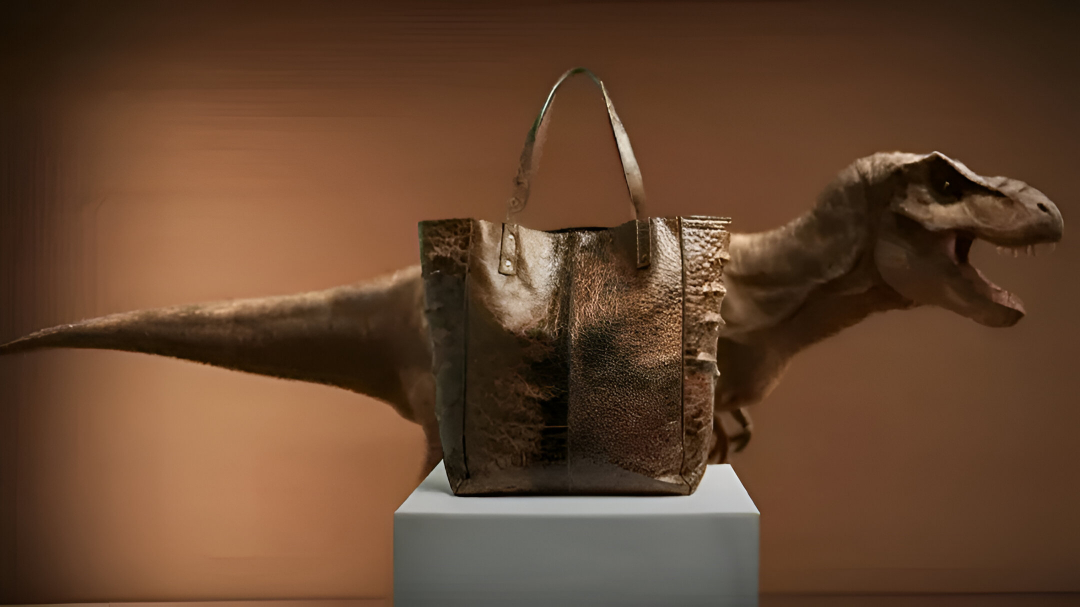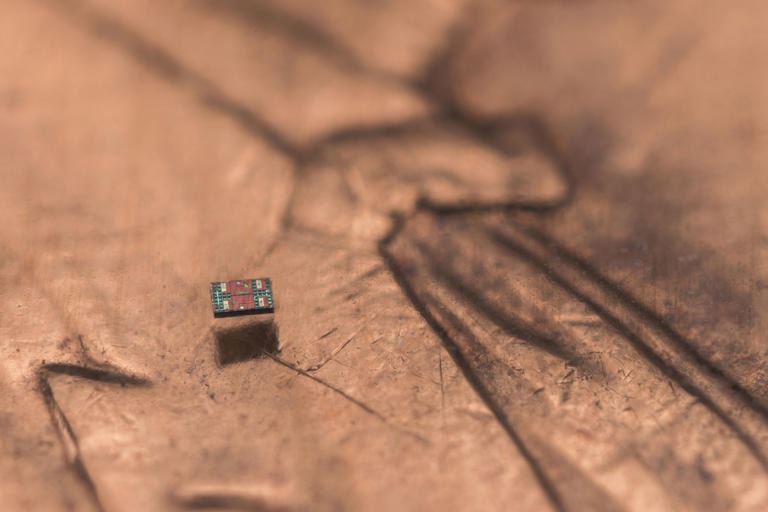Imagine wearing a piece of prehistoric history on your shoulder. Scientists and designers are making this possible by creating genuine leather from T. rex DNA. This groundbreaking collaboration between VML, The Organoid Company, and Lab-Grown Leather aims to transform luxury materials by bringing dinosaur biology into modern fashion. The process uses preserved dinosaur collagen to create high-quality, cruelty-free leather that could hit the market by the end of 2025.
Discovering Preserved Dinosaur Collagen

Scientists once believed dinosaur DNA couldn’t survive for millions of years, but recent discoveries have proven this assumption wrong. Researchers found collagen, a crucial protein found in skin, bones, and other tissues, preserved in various dinosaur fossils, including an 80-million-year-old T Rex specimen. This remarkable preservation gives scientists the biological blueprint they need to recreate dinosaur skin in the laboratory. MIT researchers recently decoded the mystery behind this long-term preservation, identifying a specific atomic mechanism that shields collagen from water’s damaging effects. This breakthrough explains how these ancient proteins remained intact for millions of years, surviving through geological epochs to reach modern scientists.
The preserved collagen represents more than just a scientific curiosity—it’s the foundation for creating genuine leather with the same biological structure as the original dinosaur. Unlike synthetic or plant-based leather alternatives that merely imitate animal leather, T-Rex leather will contain actual biological structures similar to what covered the massive predator during the Cretaceous period. This bio-fabrication approach focuses on growing real tissue from cells rather than manufacturing a lookalike material. The result promises to be uniquely authentic, carrying biological connections to one of history’s most fearsome predators while offering properties that modern technology cannot replicate through traditional manufacturing methods. Maybe one day we will be able to make leather from one of the 15 ancient beasts that made dinosaurs look tame.
The Lab-Grown Process

Creating T-Rex leather begins with fossilized dinosaur collagen serving as the critical template for modern bioengineering. Scientists use this ancient material to generate a complete collagen sequence for the T. rex, effectively reconstructing the genetic instructions for building dinosaur skin. This collagen sequence is then translated into workable DNA that can be introduced into specialized cells at Lab-Grown Leather’s facilities. The cells, now carrying dinosaur genetic material, begin producing collagen fibers that match the prehistoric original. This process represents a remarkable fusion of paleontology and cutting-edge biotechnology, bridging millions of years to create something entirely new yet authentically ancient.
“This project is a remarkable example of how we can harness cutting-edge genome and protein engineering to create entirely new materials. By reconstructing and optimizing ancient protein sequences, we can design T. Rex leather, a biomaterial inspired by prehistoric biology, and clone it into a custom-engineered cell line,” said Thomas Mitchell, CEO of The Organoid Company.
What sets this approach apart is the company’s innovative “scaffold-free” cultivation method. Unlike competitors that rely on external frameworks to guide cell growth and shape materials, Lab-Grown Leather cultivates its T-Rex material in a way that encourages cells to self-organize naturally. This results in a tightly packed collagen structure remarkably similar to the dermis layer of animal skin—the same layer that remains after traditional leather tanning. The self-organization creates a more authentic leather-like material with natural grain patterns and structural integrity. When the cultivation process completes, the material undergoes finishing treatments to produce the world’s first leather derived from an extinct species—a material that dinosaurs gave their DNA to create.
Environmental Benefits and Future Applications

Traditional leather production creates significant environmental problems, from the methane emissions of raising cattle to the toxic chemicals used in tanning processes. T-Rex leather offers a revolutionary alternative that eliminates these concerns while providing superior material properties. Because it’s lab-grown rather than harvested from animals, no habitat destruction or animal suffering occurs in its production. The material is also fully biodegradable, addressing end-of-life concerns that plague both traditional leather and synthetic alternatives. This environmental profile makes T-Rex leather potentially transformative for industries dependent on leather materials, allowing luxury without ecological compromise.
VML has announced that T-Rex leather will first appear in high-end accessories, with a flagship luxury item planned for late 2025. Following this initial offering, the material could expand into automotive applications, furniture upholstery, fashion apparel, and anywhere else premium leather is currently used. This isn’t VML’s first venture into prehistoric recreation—in 2023, they created the “Mammoth Meatball” using DNA from woolly mammoths. Both projects demonstrate the company’s commitment to what they call “harnessing the biology of the past to create luxury materials of the future.” As production scales, T-Rex leather could redefine what consumers expect from sustainable luxury goods, proving that innovation can come from looking millions of years backward.




























